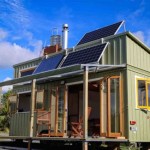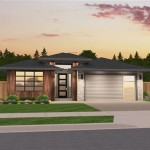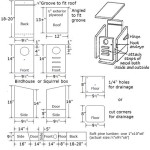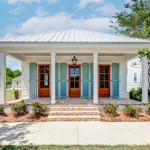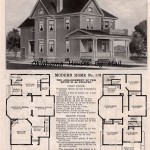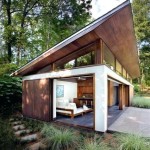Lakehouse house plans are architectural designs specifically tailored to the unique requirements of constructing a dwelling on or near a lakefront. These plans encompass a comprehensive layout that caters to the needs of lakeside living, optimizing the connection between the home and its waterfront surroundings.
A well-crafted lakehouse house plan seamlessly integrates indoor and outdoor spaces, allowing residents to fully embrace the beauty and tranquility of their natural setting. From spacious decks and patios to waterfront balconies, these homes are designed to maximize the enjoyment of lake views and provide ample opportunities for outdoor recreation.
In this article, we will delve into the essential elements of lakehouse house plans, exploring their key features, design considerations, and the benefits of embracing lakeside living. Whether you are planning to build a new lakehouse or renovate an existing one, understanding the intricacies of these specialized plans will help you create a home that truly captures the essence of your waterfront lifestyle.
Effective lakehouse house plans prioritize key elements to enhance lakeside living:
- Maximize waterfront views
- Provide seamless indoor-outdoor flow
- Create ample outdoor spaces
- Incorporate sustainable features
- Design for year-round comfort
- Accommodate water sports and recreation
- Consider local building codes and regulations
- Reflect the surrounding natural environment
By incorporating these considerations, lakehouse house plans create homes that fully embrace the beauty and tranquility of their waterfront settings.
Maximize waterfront views
Capitalizing on the breathtaking vistas offered by the waterfront is a cornerstone of lakehouse house plans. Architects employ various design strategies to ensure that the home’s interior spaces and outdoor areas optimize lake views:
Expansive windows and glass doors: Floor-to-ceiling windows and sliding glass doors seamlessly connect the indoors with the outdoors, allowing for panoramic views of the lake. These expansive glass elements invite natural light to flood the home, creating a bright and airy ambiance while maximizing the connection to the surrounding landscape.
Elevated decks and balconies: Decks and balconies positioned at strategic vantage points provide elevated perspectives of the lake. These outdoor living spaces extend the home’s living areas, offering breathtaking views while enjoying outdoor meals, relaxing in the fresh air, or simply soaking in the beauty of the waterfront setting.
Open floor plans: Open floor plans eliminate visual barriers between living spaces, allowing for unobstructed sightlines to the lake from multiple areas of the home. This design approach creates a sense of spaciousness and ensures that every room can capture the beauty of the waterfront views.
Provide seamless indoor-outdoor flow
Lakehouse house plans prioritize seamless indoor-outdoor flow to fully embrace lakeside living. This is achieved through thoughtful design elements that connect the home’s interior spaces with its exterior surroundings:
- Expansive decks and patios: Decks and patios extend the home’s living areas outdoors, creating inviting spaces for relaxation, dining, and entertainment. These outdoor areas are often designed with comfortable seating, fire pits, and outdoor kitchens, blurring the line between indoor and outdoor living.
- Large windows and sliding glass doors: Floor-to-ceiling windows and sliding glass doors open up the home to the outdoors, providing abundant natural light and expansive views of the lake. These large glass elements create a sense of continuity between the interior and exterior spaces, allowing residents to enjoy the beauty of their waterfront setting from the comfort of their home.
- Open floor plans: Open floor plans eliminate traditional barriers between living spaces, creating a more fluid and cohesive living environment. This design approach allows for easy movement between indoor and outdoor areas, fostering a strong connection to the waterfront.
- Multi-level designs: Multi-level designs, such as split-level or walk-out basements, create multiple access points to outdoor spaces. These designs allow for easy transitions between different levels of the home and the outdoors, providing ample opportunities to enjoy the waterfront views and engage in outdoor activities.
By seamlessly integrating indoor and outdoor spaces, lakehouse house plans create homes that maximize the enjoyment of lakeside living, allowing residents to fully embrace the beauty and tranquility of their waterfront surroundings.
Create ample outdoor spaces
Lakehouse house plans prioritize the creation of ample outdoor spaces to fully embrace lakeside living. These outdoor areas extend the home’s living and entertainment areas, providing seamless transitions between indoor and outdoor environments. By incorporating generous decks, patios, and balconies, lakehouse plans maximize the enjoyment of the waterfront setting.
Expansive decks: Decks are an essential feature of lakehouse house plans, offering spacious outdoor living areas that overlook the water. Constructed from durable materials such as pressure-treated lumber or composite decking, decks provide ample space for relaxation, dining, and entertainment. They are often equipped with comfortable seating, outdoor kitchens, and fire pits, creating an inviting atmosphere for gatherings and enjoying the beauty of the lakefront.
Covered patios: Covered patios provide shaded outdoor spaces that extend the home’s living areas. These covered areas offer protection from the sun and rain, allowing for year-round enjoyment of the outdoors. Patios can be furnished with comfortable seating, outdoor dining tables, and ceiling fans to create a relaxing and inviting ambiance.
Multiple balconies: Balconies offer elevated vantage points to take in the beauty of the lakefront. They are often incorporated into the design of multi-level lakehouses, providing outdoor spaces on different floors of the home. Balconies can be accessed from bedrooms, living rooms, or other indoor areas, creating private retreats for relaxation or entertaining guests.
Incorporate sustainable features
Lakehouse house plans can incorporate various sustainable features to minimize environmental impact and enhance the overall efficiency of the home:
- Energy-efficient appliances and systems: Installing energy-efficient appliances, such as ENERGY STAR-rated refrigerators, dishwashers, and washing machines, helps reduce energy consumption and lower utility bills. Additionally, incorporating energy-efficient lighting systems, such as LED or CFL bulbs, can further minimize energy usage.
- Solar panels: Solar panels convert sunlight into electricity, providing a renewable energy source for the home. By harnessing solar power, lakehouse owners can reduce their reliance on fossil fuels and lower their carbon footprint.
- Water-saving fixtures: Water-saving fixtures, such as low-flow toilets and showerheads, can significantly reduce water consumption. These fixtures help conserve water resources and lower water bills.
- Sustainable building materials: Utilizing sustainable building materials, such as recycled lumber or bamboo flooring, can minimize the environmental impact of the home. These materials often have a lower carbon footprint and promote resource conservation.
By incorporating sustainable features into lakehouse house plans, homeowners can create eco-friendly dwellings that are both comfortable and energy-efficient, contributing to a more sustainable and environmentally conscious lifestyle.
Design for year-round comfort
Lakehouse house plans prioritize year-round comfort to ensure that the home is enjoyable and livable throughout all seasons. This is achieved through thoughtful design elements that address climate control, natural light, and indoor-outdoor transitions:
- Insulation and energy efficiency: Proper insulation throughout the home’s walls, roof, and foundation helps maintain a comfortable indoor temperature, reducing energy consumption for heating and cooling. Energy-efficient windows and doors further minimize heat loss and gain, contributing to year-round comfort and lower energy bills.
- Heating and cooling systems: Lakehouse house plans incorporate efficient heating and cooling systems to ensure a comfortable indoor environment regardless of the outdoor temperature. Central heating systems, such as forced air or radiant floor heating, provide warmth during cold months, while central air conditioning or heat pumps offer cooling during hot and humid weather.
- Natural light: Large windows and skylights strategically placed throughout the home allow for ample natural light, reducing the need for artificial lighting and creating a brighter, more inviting living space. Natural light also contributes to the overall well-being of occupants, promoting a sense of connection with the outdoors and reducing the risk of seasonal affective disorder.
- Indoor-outdoor transitions: Seamless transitions between indoor and outdoor spaces are crucial for year-round comfort. Covered patios, sunrooms, and screened porches extend the home’s living areas outdoors, allowing occupants to enjoy the lakefront views and fresh air while protected from harsh weather conditions.
By incorporating these design considerations, lakehouse house plans create homes that are not only visually appealing but also comfortable and enjoyable throughout the year, maximizing the pleasure of lakeside living.
Accommodate water sports and recreation
Lakehouse house plans prioritize the accommodation of water sports and recreational activities to fully embrace the waterfront lifestyle. This is achieved through thoughtful design elements that provide direct access to the water and cater to various aquatic pursuits.
Private docks and boat slips: Private docks and boat slips are essential features for lakehouse owners who enjoy boating and other water sports. These structures provide a secure and convenient way to launch and dock boats, allowing for easy access to the lake. Docks can be designed with multiple slips to accommodate multiple boats or watercraft, and can include features such as built-in seating, lighting, and storage for water sports equipment.
Walk-out basements and swim platforms: Walk-out basements and swim platforms create seamless transitions between the home’s indoor and outdoor spaces, providing direct access to the water. Walk-out basements lead directly to a patio or deck at the water’s edge, while swim platforms extend from the deck or patio into the lake, offering a convenient and safe way to enter and exit the water for swimming, paddleboarding, or kayaking.
Lakeside decks and patios: Lakeside decks and patios provide outdoor living spaces that overlook the water, offering panoramic views and a perfect setting for relaxation and entertainment. These decks and patios can be designed with built-in seating, fire pits, and outdoor kitchens, creating inviting spaces for gatherings, dining, and enjoying the waterfront views.
Consider local building codes and regulations
When planning a lakehouse, it is crucial to consider local building codes and regulations. These regulations vary depending on the location and are established to ensure the safety and structural integrity of buildings in the area.
Building codes often include specific requirements for lakehouses, such as setbacks from the water’s edge, height restrictions, and flood zone regulations. These regulations are in place to protect the environment, prevent erosion, and ensure the safety of occupants during flooding events.
It is essential to consult with local authorities and review the building codes and regulations applicable to the specific location where the lakehouse will be built. This will help ensure that the design and construction of the lakehouse comply with the local requirements and avoid potential legal issues or construction delays.
Failure to adhere to local building codes and regulations can result in significant consequences, including fines, construction delays, and even legal action. Therefore, it is highly recommended to engage with local authorities and incorporate their guidelines into the lakehouse house plans to ensure compliance and a smooth building process.
Reflect the surrounding natural environment
Lakehouse house plans should strive to reflect the surrounding natural environment, harmonizing the home with its waterfront setting. This can be achieved through various design elements and material choices that complement the existing landscape and ecosystem.
Use of natural materials: Incorporating natural materials, such as wood, stone, and glass, into the lakehouse’s construction helps blend the home with its surroundings. Natural materials have a timeless appeal and can complement the colors and textures found in the surrounding environment. Wood siding, stone accents, and large windows that offer expansive views of the lake create a cohesive and organic aesthetic.
Sensitive site planning: Careful site planning is crucial to minimize the impact on the natural environment and preserve the beauty of the waterfront setting. The placement of the lakehouse should consider existing trees, vegetation, and natural contours of the land. By working with the existing landscape, architects can create homes that respect and enhance the surrounding ecosystem.
Energy-efficient design: Incorporating energy-efficient design principles into the lakehouse helps reduce its environmental impact. This can include using sustainable building materials, installing energy-efficient appliances and systems, and designing the home to maximize natural light and ventilation. By reducing energy consumption, lakehouse owners can minimize their carbon footprint and contribute to a more sustainable lifestyle.
Landscaping and native plants: Landscaping plays a vital role in integrating the lakehouse with its natural surroundings. Native plants and vegetation can be used to create a seamless transition between the home and the waterfront, providing food and shelter for local wildlife. Thoughtful landscaping can also enhance the beauty of the outdoor spaces and create a harmonious connection between the home and its environment.










Related Posts

